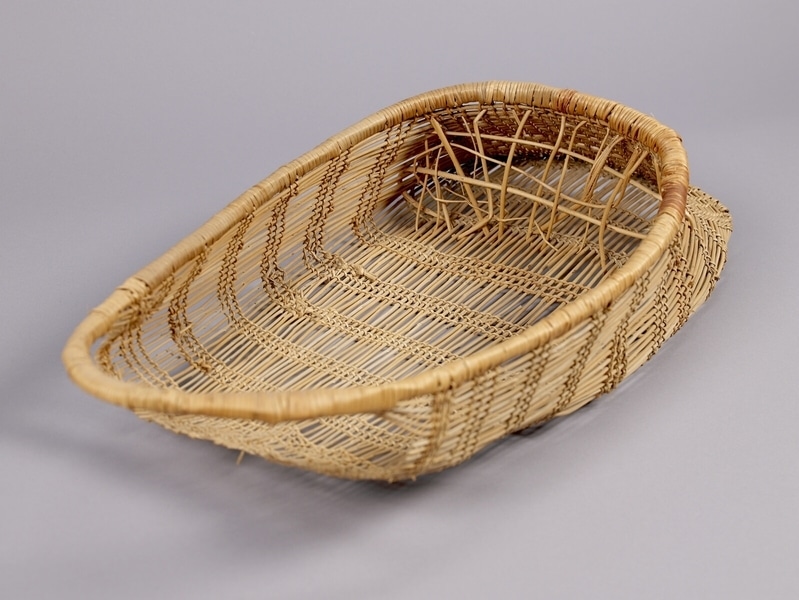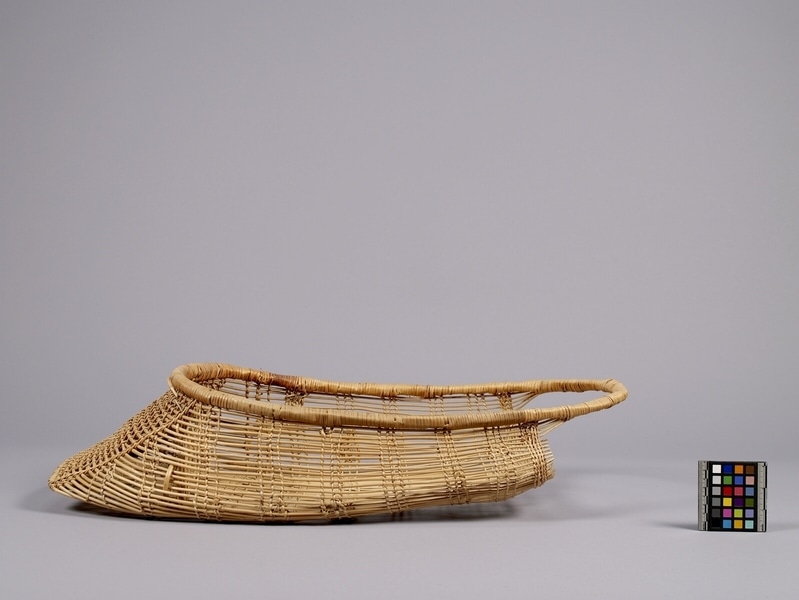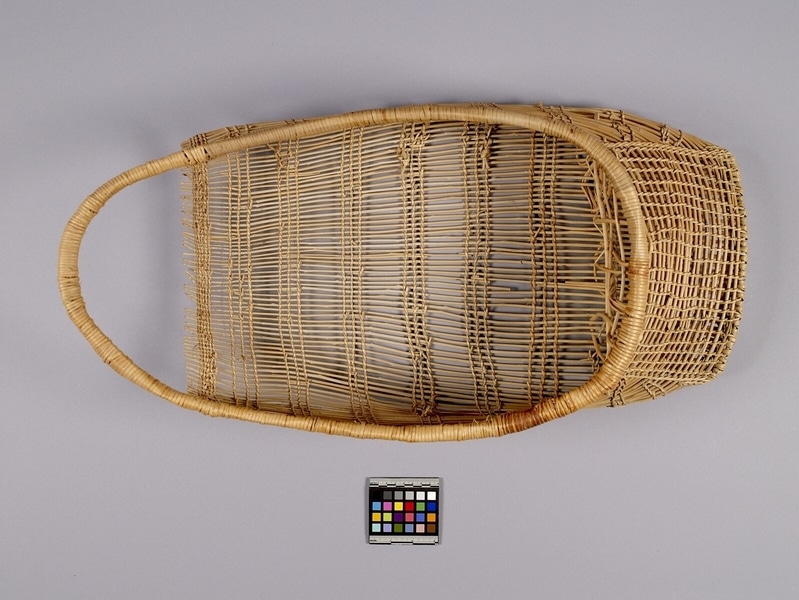Baby Carrier Item Number: Nb631 from the MOA: University of British Columbia



Description
Large, upright cradle made of willow and/or hazel(?), peeled. Young shoots woven in plain, open twine with large rim wrapped over many rods. Top part is open. Lower part where baby sits has twigs woven across the basket's rim to the bottom which creates a seat and a slipper-like structure.
History Of Use
Normally would be made by a maternal grandmother as a gift to the baby. Sitting position cradle; seats were covered with moss, backs were lined with herbs, and objects would be attached to the side of the carrier to “guide the baby on their journey” (e.g., a doll could be attached, to help them be a good parent); life lines (strands of dentalium shells or beads) would also be attached. Propped upright during the day, then hung or laid flat at night. The baby was wrapped in buckskin with arms laced against body inside cradle. Legs and feet allowed to dangle free over the cradle's rim. When travelling, the mother carried the cradle on her back, supported by a tumpline around her forehead. A child was carried in a cradle for the first few years, or until they learned to walk.
Item History
- Made in California, USA before 1976
- Collected during 1976
- Owned by Viki Tamaradze before March 24, 1976
- Received from Viki Tamaradze (Seller) and Museum of Anthropology Donations Fund (Funding source) on March 24, 1976
What
- Name
- Baby Carrier
- Identification Number
- Nb631
- Type of Item
- carrier
- Material
- willow wood ?
- Manufacturing Technique
- twined and wrapped
- Overall
- height 73.0 cm, width 35.0 cm, depth 16.5 cm
Who
- Culture
- Yurok
- Previous Owner
- Viki Tamaradze
- Received from
- Viki Tamaradze (Seller) and Museum of Anthropology Donations Fund (Funding source)
Where
- Holding Institution
- MOA: University of British Columbia
- Made in
- California, USA
When
- Creation Date
- before 1976
- Collection Date
- during 1976
- Ownership Date
- before March 24, 1976
- Acquisition Date
- on March 24, 1976
Other
- Item Classes
- basketry
- Condition
- good
- Accession Number
- 0310/0001